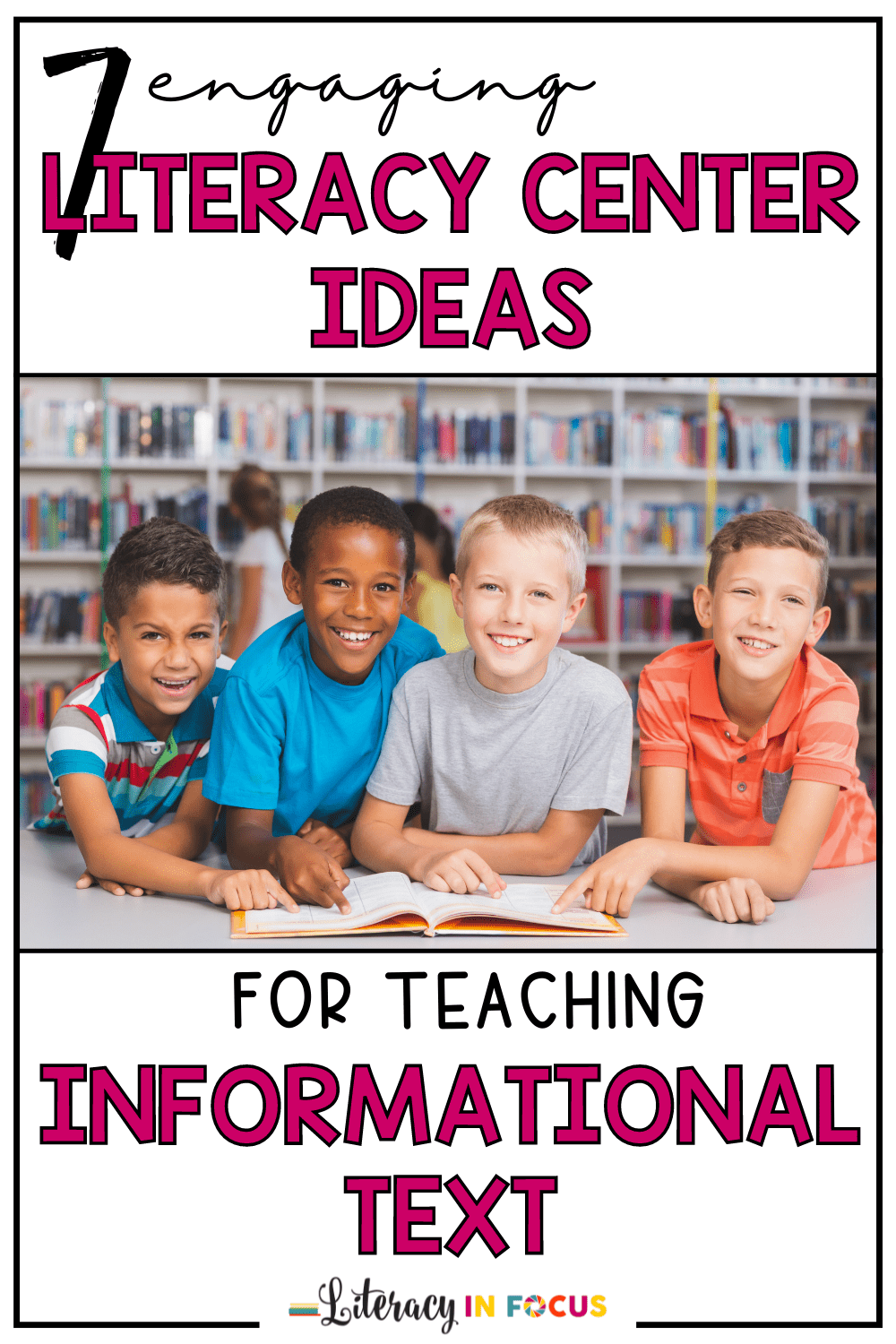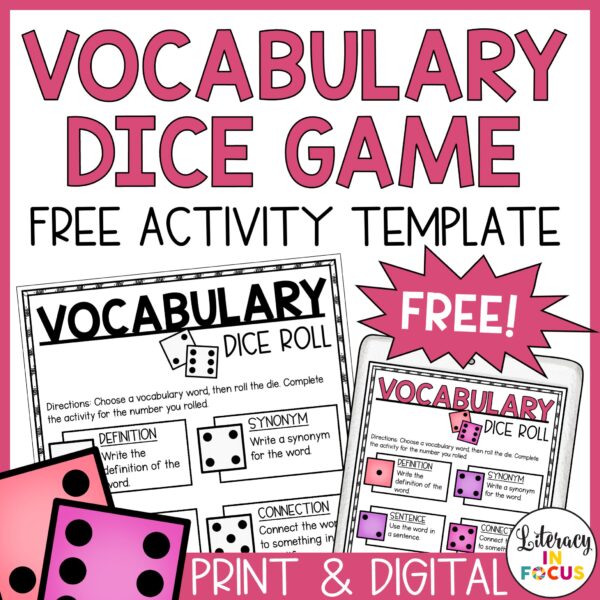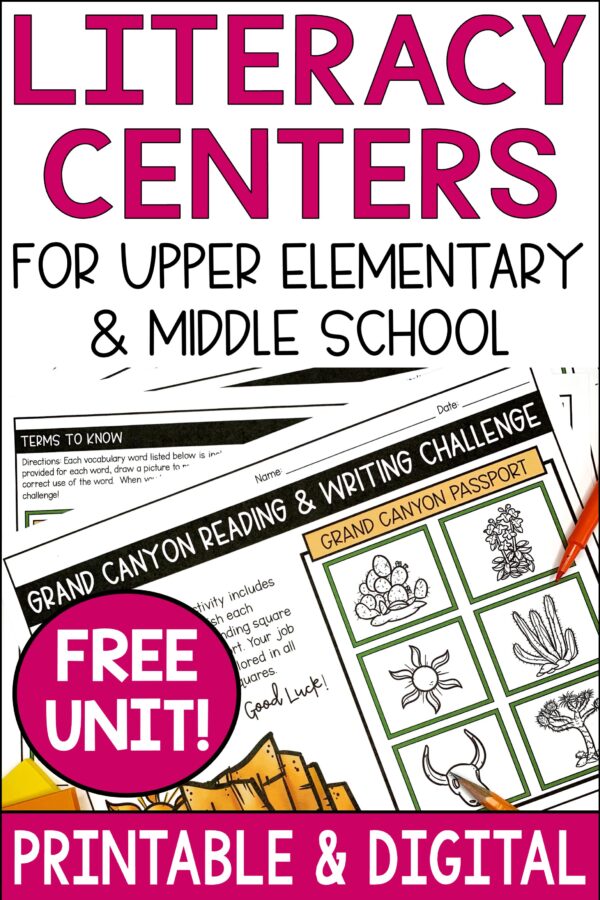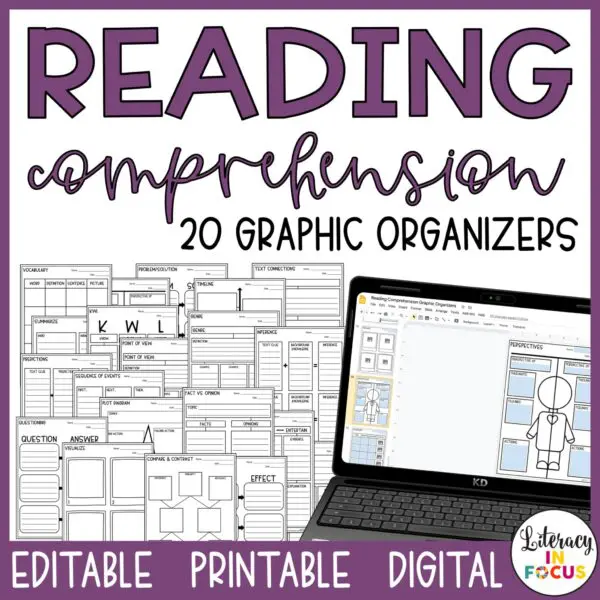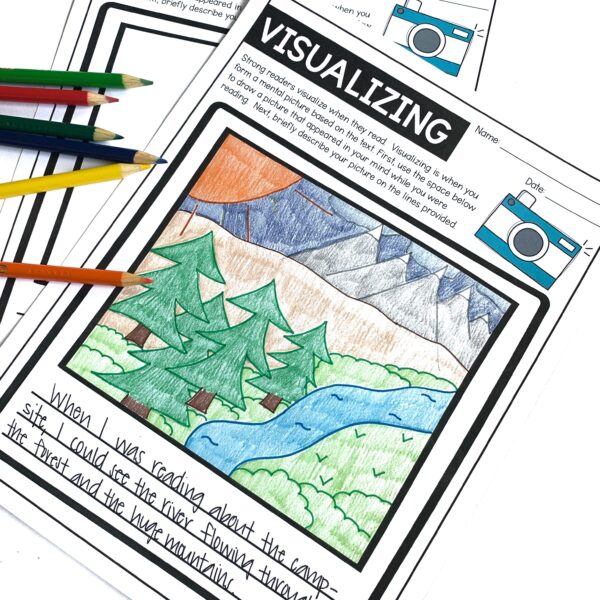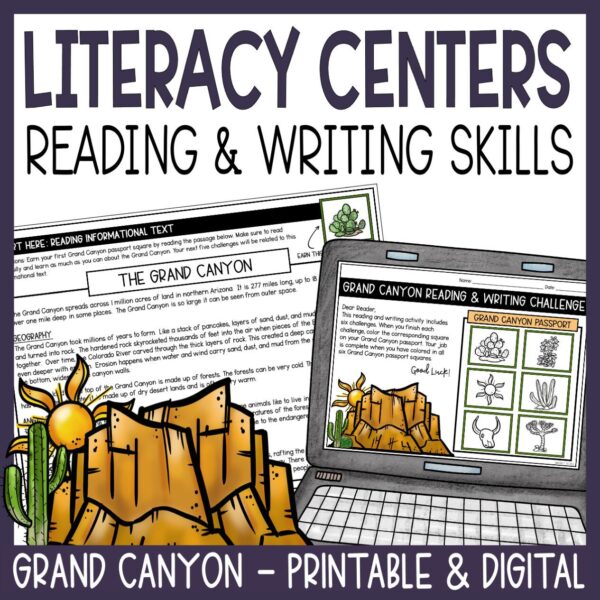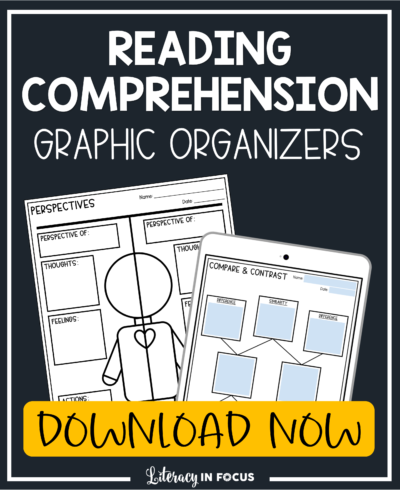Is it possible to make reading informational text fun for upper elementary and middle school students?
Yes! When you combine high-interest nonfiction text with an engaging instructional approach, you can make learning fun! Literacy centers are a great way to do this!
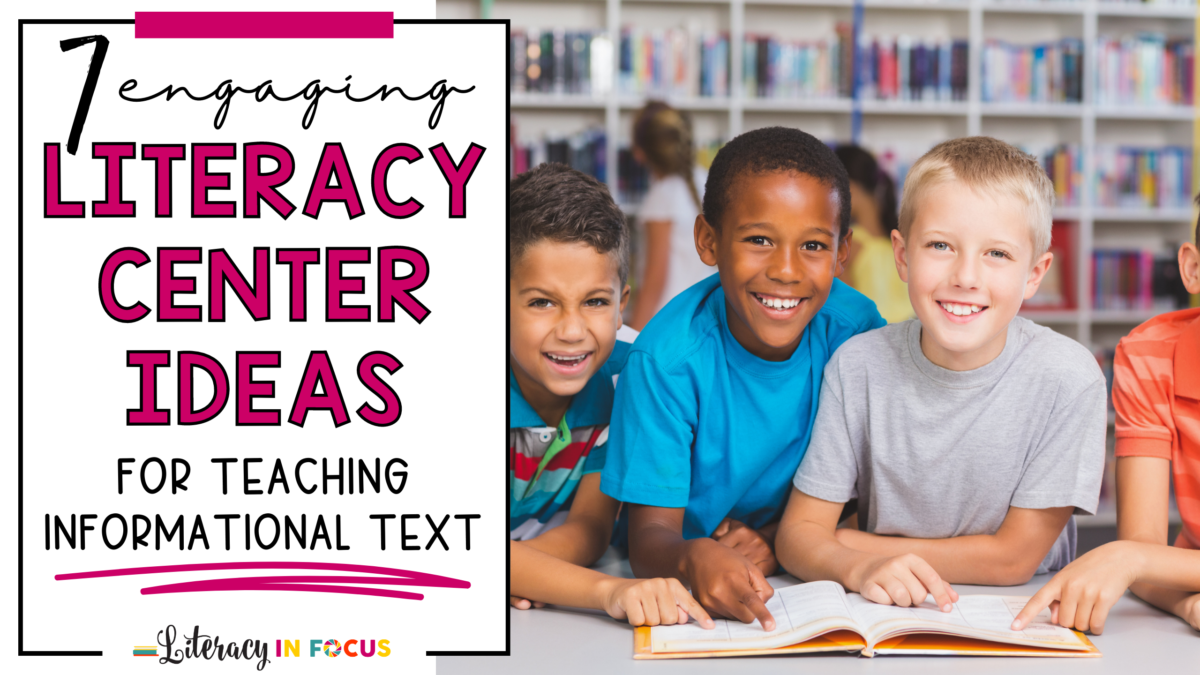
What are Literacy Centers?
A literacy center is an area designed for students to work independently or collaboratively on specific learning goals. They can be permanent or temporary, depending on the classroom and frequency of use.
Literacy centers are also called learning stations, reading centers, station activities, table rotations, and more. They are a great way to get your students thinking critically about nonfiction text in a way that encourages engagement.
It is important that literacy centers provide students with opportunities to practice and apply what they have already learned, not introduce them to new skills.
How do you organize a literacy center?
Design your literacy center activities to meet the needs of your students. Think about the skills you want to reinforce. Each center can focus on a different skill, or you can design activities that reinforce one or two skills. It’s up to you and what your students need.
Wait! Do this before you start!
Start your lesson by reading the text with students. Clear up any confusion about the text before beginning the center activities. A copy of the text for each student to use as they move through the stations is also a good idea.
1. Vocabulary
A vocabulary station is powerful because it allows students to work with new words in context, rather than isolation. This will provide students with a strong frame of reference for understanding and integration.
Using an activity that students are already familiar with will make the station activity easier to implement. The activity can be as simple as locate four unknown words, define, and write a sentence for each. It can also be more structured.
Questions to consider when planning a vocabulary station:
- How many words are your students able to work through in the designated amount of time?
- Will students find their own unknown words in the text or will words be provided?
- Will students need access to a dictionary or reference materials?
- Make it easy on yourself, and download this free vocabulary dice game template.
Free Vocabulary Dice Game | Printable & Digital Activity
2. Comprehension
This doesn’t have to be too complicated. Focus on text analysis with a reading comprehension station. To encourage and support critical thinking, scaffold the comprehension questions in a way that builds on student understanding of the text. Students will be better prepared to tackle higher level questioning if they start with a lower level of analysis.
3. Text Features
Use one of your literacy center rotations to focus on informational text features. You can set up this station like a scavenger hunt. Identify the key features you want students to locate (heading, subheading, photograph, captions, diagram, etc.). Have students write down or describe an example of each feature they find in the text.
4. Text Connections
There are three levels of text connections that students can make when reading new texts: text-to-self, text-to-text, and text-to-world. Making authentic connections with the text is a skill that needs to be reinforced, and, with repeated exposure, will lead to improvement in reading comprehension.
At this station, provide your students with a sentence frame for each type of text connection you would like them to make. Examples of sentence frames are listed below.
- ________ reminds me of __________ because ___________.
- ________ is similar to _________ because ___________.
- ________ makes me think of __________ because ________.
Click here to download a free text connections graphic organizer you can use at this station!
5. Text Structure
Use a graphic organizer to help students find examples that support the specific structure of the informational text. Examples of different types of nonfiction text structures and signal words for each type are listed below.
- Description: A descriptive text structure provides details, characteristics, and examples of something. Possible signal words include for example, such as, to show, including.
- Sequence: A chronological order text structure describes a sequence of events or list of steps. Possible signal words include first, next, last, finally, and then.
- Compare & Contrast: A compare and contrast text structure describes similarities and differences between two or more things. Possible signal words include alike, different, similarly, on the other hand.
- Cause & Effect: A cause and effect text structure describes events (causes) and the results of those events (effects). Possible signal words include therefore, since, because, as a result, if…then…
- Problem & Solution: A problem and solution text structure describes a problem and how it can be fixed or solved. Possible signal words include therefore, so that, consequently, since.
Reading Comprehension Graphic Organizers | Editable, Printable, & Digital
“This is a great resource; organized and comprehensive. Super convenient and easy to use with a variety of texts. Thanks!” -Laura L.
6. Visualization
Visualization makes reading comprehension possible. When readers visualize, there is no right or wrong answer. Have fun with the visualization station. You can provide your students with a plethora of creative options, or you can stick to the essentials. It’s up to you. The options are endless – stickers, markers, construction paper, colored pencils, etc. It really depends on what you have access to, and what you are prepared to clean up when the activity ends! You can also be flexible with the visualization requirements: will your students be required to draw one picture, several pictures, or include captions? Again, the structure and format is extremely flexible.
Click here to download a free visualization worksheet you can use with this station.
7. Spelling
One of your informational text literacy centers can be used to reinforce word recognition and spelling skills. Take advantage of the opportunity to make learning fun and design a word search with Tier 2 and Tier 3 words from the text. Add rigor by requiring students to use the word in an original sentence after finding it in the word search.
Try Before You Buy!
Are you excited about literacy centers, but worried that the planning and preparation might be a bit too much? Click the link below to download a FREE Literacy Centers Unit!
Literacy Centers – Informational Text – Free Unit
“This resource was wonderful as a virtual teacher! It provided so many different reading comprehension skills and was engaging for my students.” -Phoebe D.
